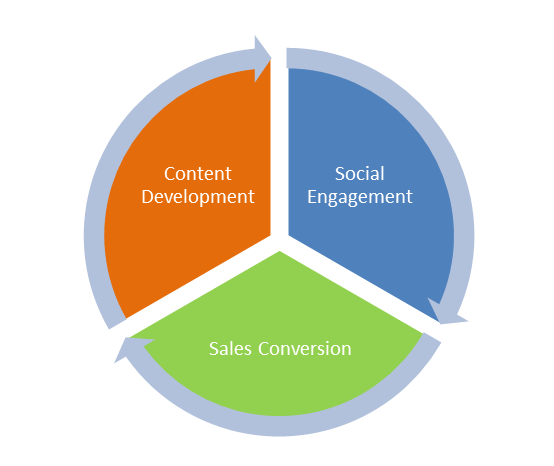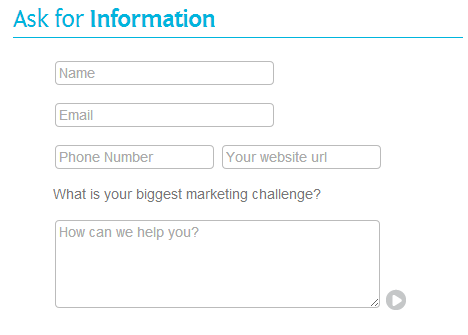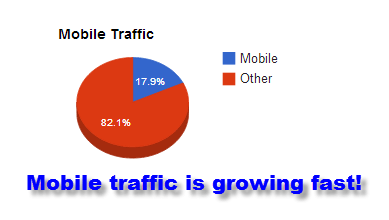As technological advancements have altered the landscape of human interaction, the field of marketing must evolve to incorporate new methods of communication & sales techniques while disposing of those marketing practices which have become old, outdated, and ineffectual. Things like telemarketing and cold-calling are overt in the way they pressure people into making a purchasing decision and therefore have become quite a cumbersome selling strategy. According to InsideView, a leader in CRM intelligence, as much as 90% of IT decision makers no longer respond to cold-calling or spam emails.
Thanks to SPAM filters and caller-ID, many sales messages are lost on their audience as people are inherently put off by such pushy in-your-face marketing strategies that tend to be perceived as nothing short of annoying. While your product might have value to a consumer, as soon as you try to muscle your way into their lives and sell something to them via an unwelcomed phone call, walls go up and it becomes virtually impossible to convert that individual into a customer.
Instead of annoying your customers, prospecting with social media in a covert way helps you to build a relationship with consumers. The relationships you build with your social media audience culminate in increased profits and have a tremendous impact on your company’s bottom line. Here are some social selling tips that will impact your profit margins.
The most important thing any business can do to increase profit margins and really impact their bottom line with social selling is to add something of value to the lives of their audience. The way to do this is to ensure that your interactions with your audience convey relevant information which will be interesting to that specific group of people. While a lot of people stress and fret about how often they should blog, tweet, or post to Facebook, the truth of the matter is that if you have something important and relevant to share with your audience, they won’t care as much about how often you are posting. Quality trumps quantity!

Solid content on your social site helps build brand equity and trust needed to drive online sales.
In general, people are very leery of a company’s motivation for asking for a phone number or email address. None-the-less, when you’ve got someone’s email address and contact information, the power of that relationship is in your hands as you can contact them down the line with information and offers they might find relevant. How then, given people’s lack of trust, do you go about acquiring people’s contact information?
In order to convince people to part with their contact details it is necessary to offer them something in return. Some successful strategies have included giveaways, asking visitors to your website to sign up for your company’s newsletter, or asking your audience to take part in opinion surveys and polls. Ply your audience with a motivating and clear call-to-action and they are more likely to willingly give over their contact details.

Ask! Don’t make it complicated, but don’t be shy either
It can not be stressed enough that social media is not a singularity or a goal in itself. While you might master one aspect of social media marketing today, tomorrow the skills you have acquired may be rendered obsolete and ineffectual. As your business sets out to improve upon your bottom line with social selling, you need to be aware that social media marketing is a fluid, ever changing process and to truly master social selling you’re going to have to be ready for fast-paced, unexpected curve balls.
An example of this is that while your business may have become quite adept at marketing to your audience via Facebook, you may not have been prepared for something like Pinterest. Pinterest is responsible for driving more traffic per member to a company’s website than any other social media platform, meaning to ignore the Pinterest trend would be detrimental to your bottom line. Staying on top of things like Pinterest and a number of other newer social media sites will, over time, prove to be quite advantageous for your business.

New social sites come along all the time, some might work well for your business…some not so well.
While we have already said that the relevance of a post is more important than the frequency with which you post, it needs to be said that posting needs to happen with some regularity necessitating a consistent flow of relevant material for your audience. By posting regularly, your business will remain at the forefront of your audience’s mind so it is important not to forget your Twitter or Facebook account for months at a time. Posting daily to sites such as Facebook, Twitter, and LinkedIn can be immensely beneficial for your business.
In keeping within the guidelines of posting regularly while maintaining a flow of relevant and important material for your audience to enjoy, a great social selling strategy will make use of social media platforms that work for your business and avoid those which you will have no use for. Instead of signing up for a business profile with every social media site you can think of, select the ones that your audience is already using and meet them there.
Social media isn’t a singular entity when it comes to achieving sales. Social selling works with your website to convert your audience into customers. If your website provides your audience with a frustrating experience, users will click off of your site without bothering to make a purchase. Bounce!
To ensure that your website isn’t putting users off, make sure your website is current, and perhaps most importantly, mobile responsive.

If you do not have a mobile-friendly website, you risk losing a big % of your audience.